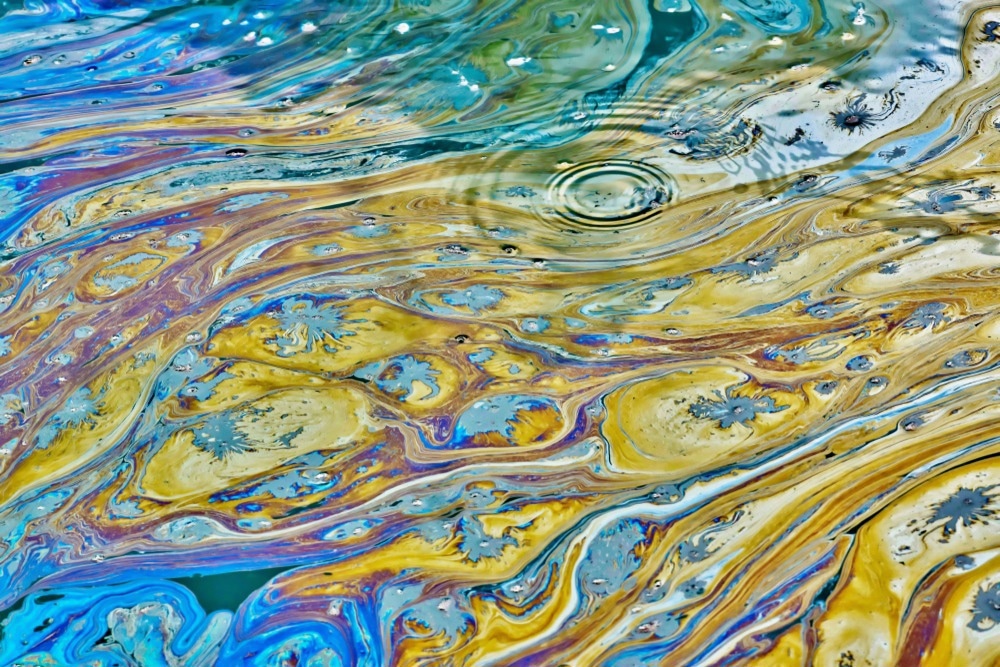The danger of oil spillage has grown with the expansion of the industrial sector, transport, and oil refineries. Thus, creating natural and effective adsorbent materials for oily effluent treatment is critical. In a paper published in the Journal of Cleaner Production, highly hydrophobic silk-based nanoscale composites were developed using plasma treatment proceeded by modification of controlled surfaces.

Study: Silk-based 2D nanocomposites for superior oily wastewater remediation. Image Credit: Brett Hondow/Shutterstock.com
Oil Spillage – A Serious Threat to the Environment
Given their vital economic and industrial applications, worldwide consumption of petroleum-based fuels has recently surged. Spillage of liquid petroleum hydrocarbons into the maritime ecosystem may happen accidentally during petroleum refining operations and maritime transport.
Such oil spills are currently regarded as one of the most severe environmental hazards due to their significant effect on maritime ecosystems and human societies. Oil spillage may take two forms: emulsions of oil in water and two-phase water/oil mixes.
Emulsions are understood to contain stable microscale droplets with complicated wettability behaviors; therefore, separating emulsified oil-in-water requires more effort than water/oil mixes.
Traditional Approaches for Oil Spill Cleanup
Natural oil spillage cleaning is an unpredictable and time-taking procedure. Numerous technologies, including biodegradation, on-site burning, skimming, segregation via gravity, air floatation, and membrane filtering, have been developed to combat this. Despite their widespread usage in recent years, these traditional technologies have drawbacks owing to low separating efficiency, secondary contamination, and high operating costs.
Sorbent Materials for Cleaning Oil Spills
Sorbent materials like sponges made from carbon nanotubes (CNTs), melamine formaldehyde, polyurethane, foams and aerogels have recently received a lot of interest due to their high adsorptive capacities and convenience of usage at oil spill locations.
As a result of their poor specificity for high concentration and heavy oils, such sorbent items still have certain drawbacks. These disadvantages pave the way for the development of natural composites possessing higher adsorptive capacities, improved specificity, and no secondary pollution tendencies.
Can Silk Split Water and Oil?
Silk is a naturally obtained fabric that is mostly generated by silkworms and is among nature's most plentiful biopolymers. It is made up of two major proteins: sericin and fibroin.
A singular fiber of silk contains two interior fibroin threads sandwiched in two outside sticky sericin threads that keep the fibroin threads connected. Silk fibroin is insoluble in water and is similar to the main protein found in raw silk fibers.
Because of its biological features such as biodegradability, biological compatibility, and non-toxic nature, silk fibroin is being used for a variety of biomedicine purposes. Importantly, silk is also a viable choice for the separation of oil and water due to its hydrophobic nature, great flexibility, and mechanical toughness.
On the flip side, silk fiber water absorption may impact oil adsorption specificity in oil-water segregation as the water absorption percentage of silk fibers rises above 50% after an hour of being immersed.
Therefore, highly hydrophobic adjustments are required to enhance silk fibers' hydrophobic behavior and reduce water absorption, resulting in improved oil/water separating performance.
Modifying Silk for Greater Effectiveness
The use of nanotechnology to increase the hydrophobic nature of fibers has been explored in previous studies.
Among the several forms of these nanoscale materials, the most prominent two-dimensional substances, molybdenum disulfide (MoS2) and reduced graphene oxide (rGO), have been effectively utilized for hydrophobic surface enhancement of different materials for effective oil-water segregation.
Main Findings of the Study
The regulated decorating of silk fibers with MoS2 and GO using a simple immersion approach resulted in the effective development of unique silk-based nanoscale composites. The pre-processing with oxygen plasma was tailored to increase the adherence of MoS2 and GO nanofilms to the whole surface of silk fibers.
rGO@PSF and MoS2@PSF nanoscale composites demonstrated excellent hydrophobic behavior, having respective water contact angles of 162° and 140°, allowing for good specificity for a variety of organic solvents and heavy oils.
The silk fiber nanoscale composites were evaluated for separating oil emulsions in water and mixtures of oil and water. They showed superior performance in comparison with other adsorbents. For mixtures of oil and water, MoS2@PSF and rGO@PSF nanoscale composites demonstrated outstanding OSC up to 90 g/g and 120 g/g, respectively.
For separating emulsions of heavy oil in water, MoS2@PSF and rGO@PSF demonstrated good separating performance with OSC up to 8018 and 8203 mg/g, respectively.
Reference
Abd-Elbaki, M. K., Ahmed, R. M., & Khalil, A. S. (2022). Silk-based 2D nanocomposites for superior oily wastewater remediation. Journal of Cleaner Production. Available at: https://doi.org/10.1016/j.jclepro.2022.132707
Disclaimer: The views expressed here are those of the author expressed in their private capacity and do not necessarily represent the views of AZoM.com Limited T/A AZoNetwork the owner and operator of this website. This disclaimer forms part of the Terms and conditions of use of this website.